Let’s say it’s the first time you’ve ever gone deer hunting. You’ve studied the weather and assessed the spot where you’ll go deer hunting. But then the first deer you see gets spooked and runs away. Will deer come back after being spooked?
In today’s article we’ll explain how deer behave after getting spooked by an unfamiliar sound or sight that they fear may be a predator.
You Frightened a Deer, Will it Come Back?
Table of Contents
Toggle- If you spooked a deer and are hoping to see it return the same day, you’ll probably be disappointed. Chances are high it won’t return immediately.
- That said, over the long term a deer is likely to come back to a certain area even after it gets spooked. However, how long it takes for the deer to return to that spot depends on how frightened it was in the first place.
- It may just take a couple of days for deer to return to the same spot if the threat level is low and the deer feels it’s safe for them to go back. Otherwise, if the deer sense they are in imminent danger, they might avoid going back to that location for several weeks.
Exploring Deer Behavior After Getting Spooked
Deer are naturally skittish and easily spooked. Loud, unnatural noises, unfamiliar scents, and the presence of predators can scare deer away.
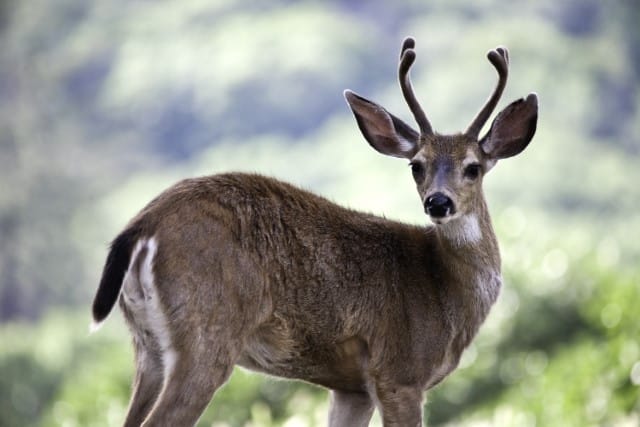
Deer also react to danger in different ways. One of the most essential things to observe when you spook a deer during a hunt is how they react to the threat.
If you see the deer flee as fast as they possibly could away from the spot, that typically means that they’re extremely scared. It’s likely that the deer saw a predator (whether human or another animal) and realized that they’re being hunted.
You may also see a deer react this way if it hears a gunshot or gets nicked by one but the injury isn’t bad enough to prevent the deer from running away as far and quickly away from you as he can.
In such cases, deer might stop going to that specific location for weeks. If the deer ever does come back after several weeks, they might move more cautiously and graze several feet away from the same spot.
In situations where the threat level is low, a deer might just be mildly startled. Rather than trying to escape from the spot as swiftly as possible, the deer might run away for a short distance and assess the danger.
Even so, a mildly scared deer would still move cautiously even if they returned to the same location after a couple of days, making it more difficult to hunt.
Factors that Influence Deer Return
While deer would keep their distance from the spot where they were spooked, they are likely to go back to that location. Before they go back, it’s natural for them to assess the level of danger or threat.
If the threat doesn’t happen again, they may come back as early as 1 to 2 days after the scare.
But if they experience the same pressure again or feel they are in immediate danger, it may took longer, for example, several weeks, for deer to return to the area.
Below are other factors that may influence deer to return after being spooked:
Habitat
Deer typically live in forests or woodland areas where there is sufficient areas for shelter, rest, and raising their young.
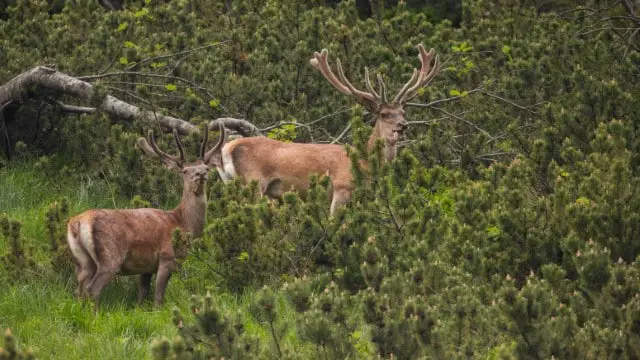
If the area is within their home range and provides a safe cover for them and their offspring, deer would possibly return to that area even after being spooked.
Availability of food and water supply
Besides shelter and protection, deer need food and water to survive. After being frightened or startled, deer would return to the area, but move with greater caution.
They might also forage a few hundred yards away from the exact site where they were startled.
Time of the year
During the rut or mating season, bucks (or male deer) are likely to go back to the location where they were spooked, especially if does frequently roam the area.
Seasons can also influence deer movement. For example, during the winter months, deer may become less active and leave their cover or bedding less frequently.
In spring, deer will likely be more active as they would begin foraging and reacquainting themselves with their habitat.
During the summer, deer may also move less as the rut season is months away. The only time that they may leave their bedding would be when they are out hunting for food.
Bucks in particular grow more aggressive in the fall as the rut season approaches since it is the time when they show their strength and dominance.
Strategies To Encourage Deer Return
Attracting deer to return after they got spooked can be challenging, but it’s possible.
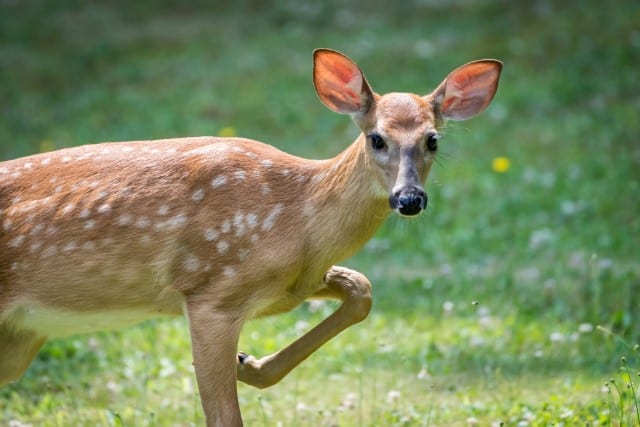
Below are some strategies that you can try to increase the chances of having a previously spooked deer to return:
Establish access paths to your stand or hiding spot
Examine the hunting area again and check for opportunities to reduce threats. Observe deer movement patterns to help you determine how they travel to and from the hunting location.
This way, you can establish the access paths to the location of your stand. Additionally, you can conceal your stand by using local shrubs, branches, and leaves to blend it into the surroundings and spook-proof it.
These suggestions should be able to let slip you into your stand or hiding place as quietly as possible to avoid drawing attention from deer.
Minimize unnecessary noise
To avoid spooking deer, you need to move as quietly as possible. Studies reveal that deer don’t hear better than an average human being. However, unlike humans, deer are capable of hearing ultra-high frequency sounds.
Also, since deer have been accustomed to the natural sound of their environment, they may interpret any strange noise as a potential threat and become more wary of their surroundings.
This could explain why even the faint rustling of clothing or clinking of your keychain can easily alert deer even if you’re yards away from it.
Use scent-control techniques
Deer have a sharper sense of smell than dogs. They also don’t like the scent of detergent and colognes and they can even pick up on natural human odor.
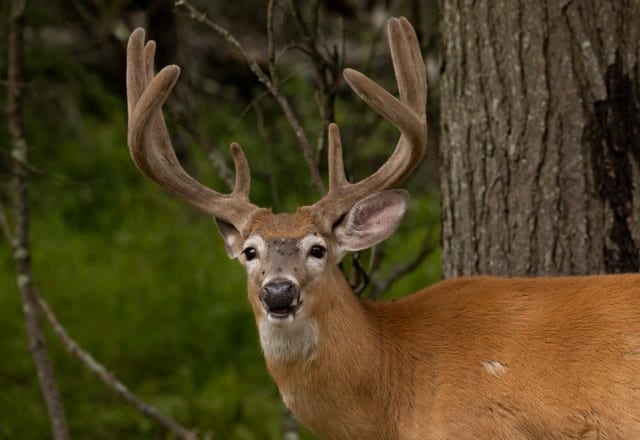
Before going on a deer hunt, try to remove all traces of human odor from your body and clothing. Wash using fragrance-free soap and shampoo and use scent-free detergent on your clothes to remove human odors.
Deer can also detect the smell of sweat, so use a scent-free deodorant. Bring scent-control or odor-masking supplies with you, so you can re-apply while you’re on a hunt.
Using the wind to your advantage can also help you in preventing deer from being aware of your presence.
Keep in mind that your position should be downwind from where the deer is. By this we mean the wind should be blowing from the deer and towards you.
Frequently Asked Questions
Here are some answers to some common questions we receive on this topic:
How long will deer come back to the same spot after being spooked?
A slightly spooked deer may return to the same location in 24 to 48 hours but, they might move more cautiously and return at nighttime.
If during the scare, the deer sensed that he was in imminent danger, it may not return for several weeks.
What are some signs that deer have returned to the area
If you see scrapes, it’s likely that deer has returned to the area recently, especially if the soil is moist and clear of any grass, leaves, and other debris. Moist deer droppings also indicate that deer have been in that location.
Are there any precautions to take when trying to take deer back?
Some of the ways to attract deer to come back to the hunting grounds is by providing food and bedding. You can leave food plots filled with easily digestible produce like corn, beans, and turnips.
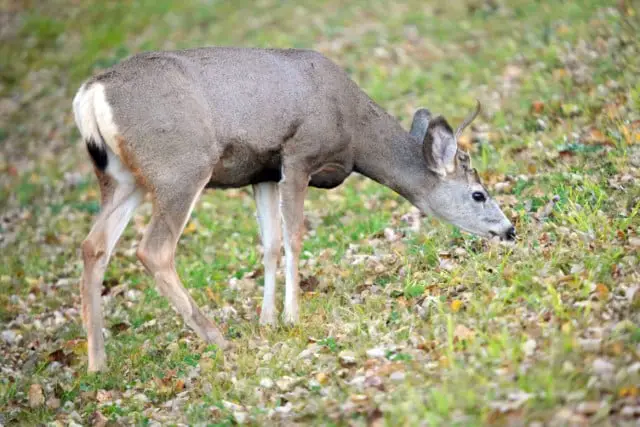
Placing a bedding area close to the food plot would also help in attracting deer to forage in the area. But before you do, check with local laws in your area. It’s important to make sure that you’re following legal and humane practices in hunting deer.
Our Final Thoughts
It takes a lot of time and effort to get ready for a deer hunt. When you think you’ve got everything under control, a slight movement or subtle noise might quickly alert deer to your presence.
When a deer is startled, their survival instinct takes over. The next thing you know, your target is running away from you, putting an end to your hunt.
Even the most skilled deer hunters have had frustrating experiences like this. The good news is that even after being startled, deer would eventually return to the same location. You just need to be patient.
Applying noise and scent-control strategies. Work to enhance your hunting stand or blind. And finally, work with the wind to help make your next hunt successful.



